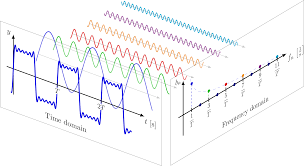Products of trigonometric functions usually refers to the integral of a product of trigonometric functions over a specified range. It can be interpreted as finding area under the curve made by a trigonometric function. For example the function:
The equation represents an area under the curve formed by the product of sine and cosine functions. The integral results to
in a geometrical terms, finding the integral of products of trigonometric functions can be described as finding an area under the curve defined by those functions over a certain interval. for example:
represents the area between the product of sin(x) and cos (x) functions and the x-axis from x =0 to x=π.
The result of the above integral is 0.25
The topic of integrals trigonometric products is important because these integrals are useful in areas like:
- Fourier series analysis
- modelling of wave interference patterns in physics
- describing mechanical vibrations and oscillations
- used to describe AC circuits and their oscillatory behaviors
Trigonometric functions of sine and cosines
products of sines and cosines are of the form:
Integrating products trigonometric functions involves use of trigonometric identities like double angle identities depending on the form of the integral.
case 1
At least one of the indices m and n is an odd positive integer. If m is an odd positive integer , then we isolate the one one sine.
consider the identity:
we express the remaining sinm x as sin(m-1) x and then express it in terms of cos x. That is:
As an example, consider the following expression.

case 2
If both m and n are non-negative even integer, we use the half angle formula which states:
As as an example, consider the integral:
please note:
(1−cos2x)(1+cos2x)=1−cos2x+cos2x–cos22x=1−cos22x
therefore:
14∫(1−12(1+cos4x)dx=14∫dx–18∫dx–18∫cos4xdx=14x–18x–133sin4x+c=18(x−14sin4x)+c
Related Topics
- Physics
- Energy of Radiation: stopping potential 2
- Introduction to surds
- Rationalizing a denominator
- The equation of a circle
- calculus
- statistics

